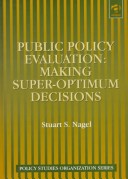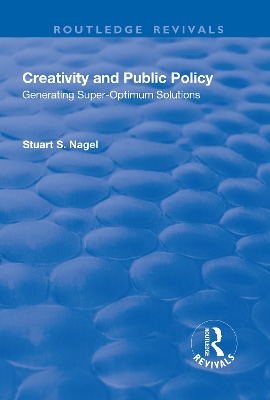Policy Studies Organization
7 total works
Chapters dealing with "analytic obstacles" that decision-aiding software helps overcome such as (1) multiple dimensions on multiple goals, (2) multiple missing information, (3) multiple and possibly conflicting constraints, (4) multiple alternatives that are too many to determine the effects of each one, and (5) the need for simplicity in spite of all that multiplicity. Chapters dealing with "applications" in different fields of knowledge. Those fields include public policy evaluation, law-related problems, and all other fields of knowledge.
This title was first published in 2000: A history of the ideas behind public policy studies, which can be defined as the study of the nature, causes and effects of government decisions for dealing with social problems.


